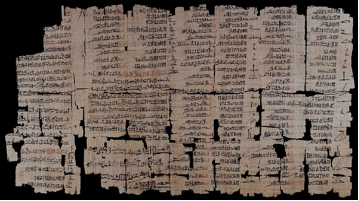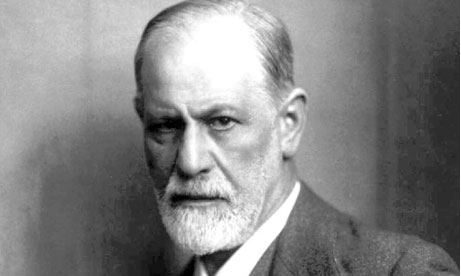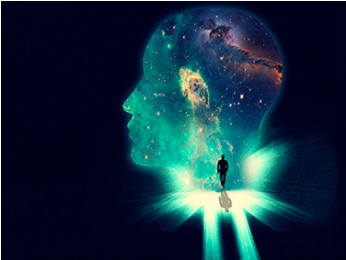What do dreams really mean?
The importance and significance of dreams has been pondered for centuries

Dreams, which usually occur during the rapid eye movement (REM) stage of sleep, remains to be one of the most puzzling and fascinating dimensions of the human psyche today. Unsurprisingly, there are several theories out there that attempt to explain the significance of dreams.
However, these topics go largely unexplored in the school curriculum — perhaps due to the topic’s lack of real world applications (though this is arguable). Regardless, PantherNation has decided to gather some information on one of the world’s most unanimously intriguing topics.
Ancient Theories

In the past, it was widely believed across multiple civilizations that dreams were messages from gods or demons (often times, dreams influenced decisions made by kings). Some believed that gods would try and send prophetic messages through dreams, but that demons started to interfere and would try and confuse humans by sending them random and meaningless dreams.
In Ancient Egypt, Egyptians created their own dream book, where they recorded a variety of dreams and their interpretations. Good dreams were written in black, and bad dreams were written in red. Egyptians would also perform rituals and sacrifices in an effort to receive prophetic messages in their dreams.
Freud’s Wish-Fulfilment Theory
 However, dreams went largely unexplored from a psychological perspective until the 1900s, when Sigmund Freud published ‘The Interpretation of Dreams’, where he laid out his theory on what dreams meant.
However, dreams went largely unexplored from a psychological perspective until the 1900s, when Sigmund Freud published ‘The Interpretation of Dreams’, where he laid out his theory on what dreams meant.
Freud believed that dreams were a representation of unconscious desires, thoughts, and motivations that we could not properly express when we were awake. In ‘The Interpretation of Dreams’, Freud writes that “[dreams are] disguised fulfilments of repressed wishes”.
He also thought that dreams were made up of 2 categories: manifest content, which was the surface level events of a dream, and latent content, which was the underlying, symbolic meaning of a dream.
Activation-Synthesis Model of Dreaming
In 1977, J. Allan Hobson and Robert McCarley proposed the idea that during REM sleep, different circuits of the brain are activated, which causes areas in the limbic system related to emotion, sensations, and memories to become active. The brain then interprets and synthesizes this information as if the signals were being caused by environmental factors.
Despite the random nature of dreams proposed by Hobson and McCarley, Hobson believed that dreaming was “our most creative conscious state, one in which the chaotic, spontaneous recombination of cognitive elements produces novel configurations of information: new ideas.”
Other Theories
The Information processing theory proposes that dreams are merely a way of letting us process and store all the information that we had gained in the previous day. This theory is backed up by some evidence that shows REM sleep is important in remembering things from the previous day.
The evolutionary dreams theory suggests that the purpose of dreaming is a biological one that simply gives humans an opportunity to practice how to deal with potentially life threatening situations in real life, something that may have came in handy in prehistoric times.
Different Types of Dreams

Regardless of what the true purpose or cause of dreams is, it is also worth noting the wide variety of dreams that can occur in humans.
Lucid dreams occur when the dreamer realizes that they are asleep while they are dreaming. This realization can sometimes give the dreamer the ability to fly, or change the contents of the dream.
Recurring dreams are when common storylines or themes seem to repeat themselves over time. Some believe that recurring dreams are the mind’s attempt to force you to acknowledge something that is weighing on you.
Sleep paralysis typically occurs right before you fall asleep or wake up, and results in a temporary inability to move or speak. People who experience this have often reported hallucinations of demons.
 Out of body dreams involve the sensation of being lifted from your physical body and floating away from it. Some describe the sensation as euphoric, as they can observe the entire world around them, while others describe it as terrifying, as they are unsure if they will ever be able return to their original body. Drugs and meditation have also been known to induce this state.
Out of body dreams involve the sensation of being lifted from your physical body and floating away from it. Some describe the sensation as euphoric, as they can observe the entire world around them, while others describe it as terrifying, as they are unsure if they will ever be able return to their original body. Drugs and meditation have also been known to induce this state.
Precognitive visions are dreams that help you foresee future personal experiences, a concept introduced by philosopher JW Dunne in his book ‘An experiment with time’. Dunne believed that being awake prevented us from properly observing our future, but that dreams allowed us to see glimpses of the future. Dunne also felt that this was connected to dejavu and the afterlife. However, a lot of people have criticized this theory.
Dreams are undoubtedly one of the most interesting aspects of the human mind, yet it would be impossible to explore this concept fully – but that doesn’t mean we won’t stop trying.
Which theory do you agree with the most? What is the weirdest dream you have ever had? Do you have your own theory for why dreams exist? Do you think every single dream to have ever occured is unique? Are dreams connected to altered states of consciousness or the afterlife? Readers are encouraged to continue the discussion in the comment section below.










